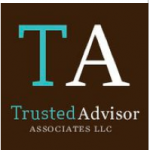The Dark Side of Work to Come
 If one wants to be a pessimist about the future of work, there is no shortage of opportunities to nurture one’s paranoia. A compelling new work by Lynda Gratton—The Shift: The Future of Work is Already Here—could feed your dark fears. But she also shines considerable light on them, showing the way out, and the way towards a fulfilling future. If, that is, we can follow our better angels.
If one wants to be a pessimist about the future of work, there is no shortage of opportunities to nurture one’s paranoia. A compelling new work by Lynda Gratton—The Shift: The Future of Work is Already Here—could feed your dark fears. But she also shines considerable light on them, showing the way out, and the way towards a fulfilling future. If, that is, we can follow our better angels.
Lynda Gratton is Professor of Management Practice at London Business School, where she leads over 50 global companies in the Future of Work Consortium. She has been praised by the Economist, hailed by the Times, and lauded by the Financial Times. She certainly tones up our joint neighbourhood of Primrose Hill.
Drivers of the Dark Future
Gratton outlines five forces that will shape the future pattern of work:
- Technology (think 5 billion people, digitized knowledge, ubiquitous cloud).
- Globalisation (think continued bubbles and crashes, a regional underclass, the world becoming urban, frugal innovation).
- Longevity and demography (think Gen Y, increasing longevity, aging boomers growing old poor, global migration).
- Society (think growing distrust of institutions, the decline of happiness, rearranged families)
- Energy resources (think rising energy prices, environmental catastrophes displacing people, a culture of sustainability emerging).
There are good sides of all the above as well; but let’s stay on the dark side of work for a bit. Think increasing fragmentation (a three minute world, dominated by overload and time compression), isolation (the genesis of loneliness) and exclusion (the new poor). (Remember A Clockwork Orange, anyone?)
Bring In the Light
But she also holds up the bright possibility of a crafted future – co-creation (where people across the world are ever more willing and able to link up and share ideas and energy), social engagement (the rise of empathy and balance) and micro-entrepreneurship (crafting creative lives).
If we are to reach the bright possibilities of this crafted future, we need to bring about three shifts:
1. From shallow generalist (knows a little about a lot) to serial master (has in-depth knowledge and competences in many domains).
To get here, three career paths will be of particular importance – grassroots advocacy, social entrepreneurship, and micro-entrepreneurship.
Future career trajectories will be defined by a series of bell-shaped curves in which energy and the accumulation of resources grow and then plateau, only to grow again. She urges us to ‘slide and morph’ transferring knowledge and skills from one specialism to another.
2. From isolated competitor to innovative connector.
‘One of the marvellous opportunities of the coming decades of work will be to build our social capital in a way that was never possible in the past. With 5 billion people connected to each other in an increasingly participative way, the possibilities are endless.’
Gratton sees three key future network-types:
- The posse; the small group of people we use as a sounding board, people we call on quickly for a tough call to make, a really challenging problem to be solve or a complex task to get underway.
- The big ideas crowd; the group of hundreds, often friends of friends, ready to make a connection, support our innovation.
- The regenerative community; ‘the real people whom we meet frequently, with whom we laugh, share a meal, tell stories and relax’, crucial to our emotional well-being, and our protection against the possible isolation and loneliness of the dark side.
How can we best build these networks? Mainly by our capacity to build reciprocity and trust, deep mutual understanding and ways to attract other people to us.
3. From voracious consumer to impassioned producer.
The trend toward seeing work as a place of productive experiences rather than simply an activity that has pay as its key driver of motivation.
Work for Whom?
Cui bono? Gratton invites three groups in particular to consider the implications of these three shifts:
1. Children. ‘What will you do with your long, productive lives?…Your life will not simply have education at the beginning, with work in the middle and retirement at the end. Instead, you can expect to experience a mosaic that has education and development woven through it….Much of your work will be spent working with people virtually, and so one of the challenges you face is how to create deep friendships with a small group of people in a sustainable way.’
2. Business leaders. ‘Globalisation will add new markets and intensify competition; work hierarchies will morph into more organic forms; talented employees will want adult-adult mutual relationships; people will place greater emphasis on meaningful developmental work in a mosaic that has sabbaticals; and throughout it all, sources of competitive advantage will derive from the capacity to build co-operative relationships across various eco-systems.’
3. Government leaders. ‘ Governments’ willingness to support high-quality educational and cultural institutions will play a key role in attracting people with high value skills who will increasingly choose to cluster near each other….While ever more prevalent transparency and sharing of information will only serve to exacerbate the current decrease in citizens’ trust in institutions….. Gen Z’s will want to work into their 70’s and 80’s, and it will be a priority for government s to find ways to support these aspirations.’
If Professor Gratton is right, it’s clear that empathy, reciprocity and trust will figure significantly in both personal and organisational successes of the future. But tellingly, these are currently under-developed capabilities.
It is those traits—empathy, reciprocity, trust—which probably hold the key to which side of Professor Gratton’s predictions for the future of work will take hold—the Dark Side, or our better angels.

 Heber Sambucetti is a senior learning consultant with
Heber Sambucetti is a senior learning consultant with  This post is not about piling on
This post is not about piling on  When it comes to trust-building, stories are a powerful tool for both learning and change. Our new
When it comes to trust-building, stories are a powerful tool for both learning and change. Our new  I’ve been giving business presentations for nearly 20 years. The more I do it, the more I appreciate just how hard it is to do it really well. Today’s blog post features four resources to help with various aspects of speaking and presenting. Please add your favorites!
I’ve been giving business presentations for nearly 20 years. The more I do it, the more I appreciate just how hard it is to do it really well. Today’s blog post features four resources to help with various aspects of speaking and presenting. Please add your favorites! Usually “acceptance” means giving in to some over-powering force–grudgingly. Active acceptance is not part of the basic toolkit of trust, but it belongs in the advanced course. If you can learn to actively accept, you will gain unheard-of levels of trust. Not to mention, you’ll be a lot happier.
Usually “acceptance” means giving in to some over-powering force–grudgingly. Active acceptance is not part of the basic toolkit of trust, but it belongs in the advanced course. If you can learn to actively accept, you will gain unheard-of levels of trust. Not to mention, you’ll be a lot happier.
 I had a delightful Notting Hill lunch this spring with
I had a delightful Notting Hill lunch this spring with  We’ve gone and done it.
We’ve gone and done it.